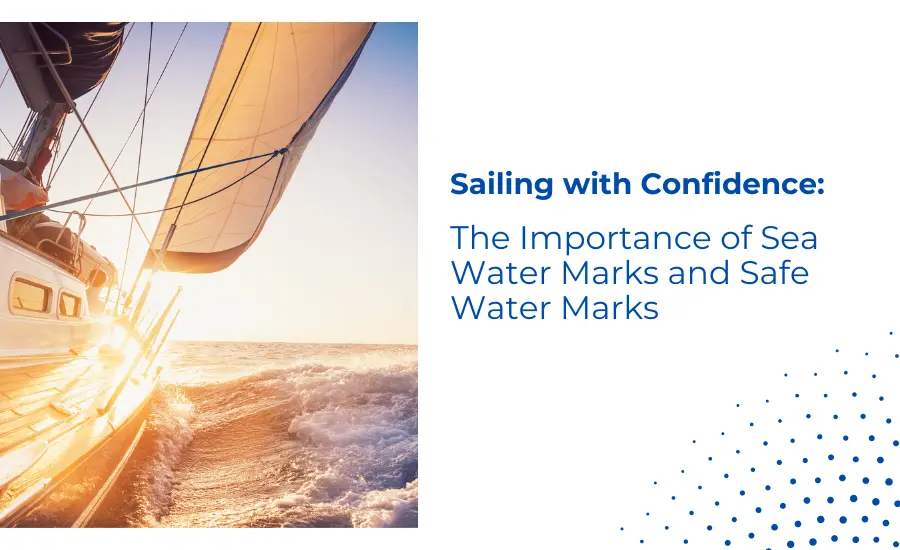
Sea Water Marks are physical signs for navigational aids and reference. These indicators or criteria can be used for a variety of purposes, including Markings of passages, channels, canals, or other bodies of water or bottoms of particular interest. Examples of this include enemy or restricted areas, defensive areas, administrative areas, or government areas.Marking beaches, coastlines, islands, rock formations, or other natural and man-made obstacles.Delineate and identify hazardous areas or bodies of water associated with hazards or potential risks. For example, shoals, coral reefs, barriers, and other geographic or topographical features.
Other examples
Include human causes such as underwater mines, shipwrecks, and hostile areas littered with flooded structures. Sea Water Marks Indicates areas with high maritime traffic and congestion. Near a large port, terminal, or man-made canal through which many ships pass regularly.Marking of Sea Water Marks bodies based on draft height, tidal conditions, icing or land restrictions.Identifying safe, risk-free, and passable areas. Navigation signs are best compared to traffic signs that we sometimes see. These are most important for sailors and navigators. There are many different types of marine traces. However, they can be broadly classified into the following categories:
• Fixed
• Floating
Fixed Structures
They are structures that are fixed to the ground. They can be mounted on the ocean floor or on land near the coast or body of water. Lighthouses, which have fascinated us since childhood, are truly symbols of the sea! Its main purpose is to inform mariners of the presence of land or coastlines and, conversely, to keep an eye out for oncoming maritime traffic. Submarine-mounted structures range from small tubular, single-legged structures attached to the ocean floor and used to mark specific Sea Water Marks points or locations to larger structures similar to offshore oil structures. Complex combinations of these elements may include lights and radios. Or acoustic signals for specific purposes such as defence or marking and securing large coastal installations with Sea Water Marks.
A Floating Structure
It is a buoy that remains suspended in a particular location and is usually tethered or fixed to prevent drifting. These smaller structures serve a similar purpose to those described Often used to form guidance routes for ships near coasts or ports, demarcate non-navigable zones, or for safe navigation in busy areas of maritime traffic. Used multiple times to function as a separation.
Features
Apart from these, there may currently exist nautical marks based on the following features or a combination thereof:
- with lighting and illumination
- with acoustic functions
- with special features such as radio signals
- No required features. The first type is the most common.
These can be recognized by their luminescent properties. They are usually equipped with lighting features such as revolving lights, floodlights, fog lights, and turn signals. However, passive lighting can also be provided using reflectors, etc. The second category includes audio or acoustic features such as horns. Sea Water Marks should be recognized not by their visual presence but by their audio signals. Other fixed structures, such as lighthouses and towers, are usually equipped with acoustic and visual detection features such as large beacons and foghorns. Modern navigational beacons, including some newer lighthouses, are often equipped with advanced technology such as radio transmission and satellite or telecommunications capabilities. Some sea crests have no distinctive features. These include buoys and structures that are only visible during the day. These are called day stamps. It cannot be detected at night.
The International Association of Lighthouse Authorities
(IALA) is the primary governing body that issues regulations and guidelines for the design, disposal, use, and operation of these navigational aids. The application of these regulations can be broadly divided into two regional categories: Region A: All other regions of the world except North and South America, Japan, South Korea, and the Philippines.Region B: Americas, Japan, South Korea, Philippines.
Safe Watermarks
Sea Water Marks can now be of different types According to existing IALA guidelines, they can have different designs, appearances, colours, shapes, and configurations, each coded according to its purpose. A save watermark is one such type, a navigational mark used to identify navigable waters within and around a location. These safe watermarks are used to identify fairways, centre channels, channel edges, and landfalls. Fairway is typically used to indicate a navigable route, often an entrance or approach to a canal, harbour, or estuary. Mid-channel refers to the area in the middle of the channel where it is safe to navigate. Simply put, it refers to an unobstructed waterway along a particular route.
Similarly, save watermarks are also used to mark the end of navigable waterways and canals. Landing markers typically indicate the presence of surrounding landmass from the perspective of a sailor or navigator. Secure watermarks are typically colour-coded in red and white. In reality, these are floating markers such as buoys, but there are also fixed structures. They are either spherical (for buoys), spar-like (floating or fixed), or elongated tubular structures (mainly fixed).
Centre channel indicators typically use spherical markings. The secure watermark is also characterised by the presence of a red ball-like ball at the top, similar to that seen on the Christmas tree or Santa Claus’s red hat. This type of marker also has a unique lighting pattern. At night, the safe watermark will send a long flash every 10 seconds. Safety watermarks are also often used in waterway underpasses under bridges to indicate the safe passage of vessels with a certain maximum height applicable to a particular waterway.










